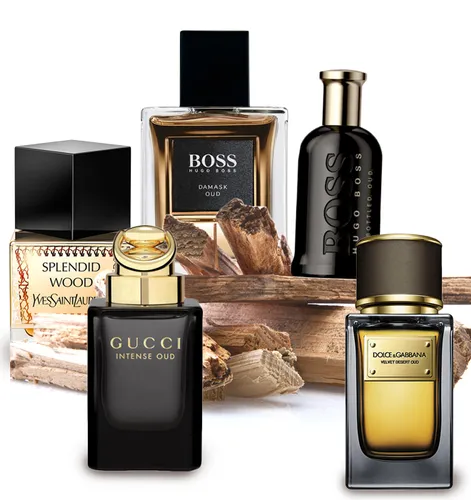The Future of Sri Lankan Sapphire: Trends and Innovations in the Gemstone Market
A Rich Legacy Entering a New Era
Sri Lanka, formerly known as Ceylon, has long been celebrated for its remarkable sapphires. The island’s gemstone history dates back over 2,500 years and remains deeply ingrained in its culture and economy. Among the world’s most coveted gems, the Srilankan sapphire has carved a distinctive position due to its radiant hues, high clarity, and ethical sourcing. As the global gemstone market evolves, the future of the Srilankan sapphire is being shaped by technological innovations, shifting consumer trends, and sustainability concerns. This article delves into the forward-looking aspects of this celebrated gemstone and explores how it is poised to meet modern-day expectations while preserving its traditional prestige.
Evolving Consumer Preferences and Market Demand
The global demand for colored gemstones is on the rise, driven by a new generation of consumers who value uniqueness, provenance, and ethical sourcing over conventional luxury. Millennials and Gen Z buyers are especially interested in jewelry that tells a story and holds intrinsic meaning. This demographic shift is benefiting the Srilankan sapphire, which has always stood out due to its traceability and artisanal mining traditions. Unlike diamonds, sapphires—particularly from Sri Lanka—carry a reputation for natural beauty and authenticity, with many stones undergoing minimal treatment. This appeals strongly to buyers seeking transparency and a strong connection to the origin of their gems.
In addition, colored gemstones are increasingly popular in non-traditional settings such as engagement rings and investment portfolios. With blue, pink, yellow, and padparadscha varieties available, the diversity of the Srilankan sapphire offers a wide palette to satisfy personalized tastes and rare gem collectors alike.
Technological Advancements in Sapphire Cutting and Certification
Modern gemstone processing has seen significant innovation, and Sri Lanka is quickly integrating these technologies to enhance the global competitiveness of its sapphires. Advanced precision cutting techniques now ensure that each Srilankan sapphire maximizes brilliance while preserving carat weight. 3D modeling and laser cutting enable gem cutters to analyze rough stones thoroughly and extract the most value with minimal waste.
Additionally, gemological certification is becoming increasingly sophisticated. Blockchain technology is now being explored to create tamper-proof records of a sapphire’s journey—from mine to market. This not only boosts consumer confidence but also reinforces the ethical positioning of the Srilankan sapphire industry. Reputed institutions such as the National Gem and Jewellery Authority (NGJA) and Sri Lanka Gem & Jewellery Exchange are adopting these innovations to establish global credibility and traceability, setting the benchmark for responsible sourcing.
Sustainability: A Driving Force in Gemstone Mining
Sustainability has emerged as a central concern in the global gemstone industry. Sri Lanka, with its longstanding tradition of low-impact, small-scale mining, is already ahead of the curve compared to many other gem-producing regions. Unlike mechanized open-pit mines, Sri Lankan gem mining typically involves artisanal methods that preserve the environment and maintain community involvement.
The future of Srilankan sapphire mining lies in strengthening these sustainable practices. Initiatives are being developed to formalize the artisanal mining sector, provide safety training, and ensure fair wages. Community-based cooperatives and government partnerships aim to create a more equitable value chain, allowing local miners and artisans to benefit from the global sapphire trade. Eco-friendly practices such as land restoration, water recycling, and the use of renewable energy in processing centers are also becoming standard in many mining districts.
Digital Transformation and Online Retail
One of the most transformative trends for the Srilankan sapphire industry is the digital revolution in gemstone retail. Online platforms are becoming the primary avenue for global gemstone sales, especially after the COVID-19 pandemic accelerated digital commerce. High-resolution imaging, virtual try-ons, and 360-degree videos allow customers to examine gemstones in detail from anywhere in the world.
Sri Lankan sapphire dealers and jewelers are increasingly embracing e-commerce, investing in digital storefronts, secure payment systems, and real-time communication with international buyers. The adoption of digital marketing, including SEO, influencer collaborations, and social media storytelling, has helped Srilankan sapphires reach new global audiences and niche markets such as ethical fashion and bespoke bridal jewelry.
Innovation in Jewelry Design
The artistry surrounding Srilankan sapphire jewelry is undergoing its own evolution. Jewelers are blending traditional motifs with contemporary aesthetics to appeal to modern tastes. Minimalist, geometric, and asymmetrical designs are replacing overly ornate settings, especially for everyday luxury wear.
Customization is also driving innovation. Consumers want personalized pieces that reflect their values, personalities, and even astrological preferences. Sri Lankan jewelers are offering made-to-order services that incorporate birthstones, engraving, and symbolic elements into one-of-a-kind sapphire jewelry.
Furthermore, collaborations between local designers and international brands are placing Srilankan sapphire collections on global runways, fashion weeks, and high-end retail displays. These partnerships highlight the stone’s versatility and enduring elegance, keeping it relevant in a fast-paced, trend-driven market.
Education and Gemological Training
Another crucial component of the industry’s future is the investment in education and training. To maintain the high standards associated with Srilankan sapphire, institutions are offering specialized courses in gemology, lapidary arts, and jewelry design. Programs conducted by the Gemological Institute of Colombo and other centers are equipping a new generation of skilled professionals who can combine traditional knowledge with modern methods.
As international buyers become more informed, sales representatives, traders, and designers must also be prepared to provide detailed information on a sapphire’s characteristics, treatment status, and origin. This growing emphasis on transparency and expertise enhances the credibility of the Sri Lankan sapphire industry as a whole.
Investment Potential in a Changing Economy
Srilankan sapphire is increasingly being viewed not just as a piece of luxury jewelry but as a tangible asset with investment potential. Amid economic uncertainty, tangible assets like high-quality sapphires offer stability and long-term value appreciation. Investors are turning to certified, untreated sapphires from Sri Lanka, especially in rare colors such as royal blue or padparadscha, due to their scarcity and lasting market appeal.
The government is also encouraging this trend by promoting gemstone trading hubs and tax incentives for export-quality stones. This strengthens Sri Lanka’s position in the international gemstone investment market, offering an alternative to traditional financial instruments.
Conclusion: A Bright Horizon for a Timeless Gem
The Srilankan sapphire is standing at a dynamic intersection of tradition and transformation. Its reputation for excellence, backed by centuries of heritage, is now being complemented by forward-thinking innovations in sustainability, technology, marketing, and design. As consumers grow more discerning and socially conscious, the values embedded in every Srilankan sapphire—from ethical mining to artisanal cutting—are more relevant than ever. The future of this gemstone is not only secure but radiant, poised to shine even brighter in the evolving landscape of the global gemstone market.







